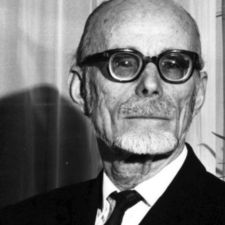| Pierre Victor Auger | |
|---|---|
 Pierre Victor Auger | |
| Born | May 14, 1899 Paris |
| Died | December 25, 1993 (aged 94) Paris |
| Nationality | French |
| Fields | Physics |
Pierre Victor Auger (May 14, 1899 – December 24, 1993) was a French physicist, born in Paris. He worked in the fields of atomic physics, nuclear physics, and cosmic ray physics.
The chemistry professor Victor Auger was his father. Pierre Auger was a student at the École normale supérieure in Paris from 1919 to 1922, the year when he passed the agrégation of physics. He joined then the physical chemistry laboratory of the faculté des sciences of the University of Paris under the direction of Jean Perrin to work there on the photoelectric effect. He obtained in 1926 from the University of Paris his doctorate in physics. In 1927, he was named assistant to the faculté des sciences of Paris and, at the same time, adjoint chief of service to l'Institut de biologie physico-chimique. Chief of work to faculty in 1934 and general secretary of the annual tables of the constants in 1936, he was named university lecturer in physics to the faculty on the first of November 1937. He was charged with, until 1940, the course on the experimental bases of the quantum theory within the chair of theoretical physics and astrophysics. He was also adjoint director of the laboratory of physical chemistry. He occupied then the chair of quantum physics and relativity of the faculté des sciences of Paris.
At the end of WWII, he was named director of higher education from 1945 to 1948, which permitted him to introduce the first chair of genetics at the Sorbonne, conferred upon Boris Ephrussi.
The process where Auger electrons are emitted from atoms is used in Auger electron spectroscopy to study the elements on the surface of materials.[1] This method was named after him, despite the fact that Lise Meitner discovered the process a few years before in 1922.
In his work with cosmic rays, he found that the cosmic radiation events were coincident in time meaning that they were associated with a single event, an air shower. He estimated that the energy of the incoming particle that creates large air showers must be at least 1015 electronvolts (eV) = 106 particles of 108 eV (critical energy in air) and a factor of ten for energy loss from traversing the atmosphere (Auger et al., 1939).[2][1]
He was instrumental in creating both CERN and ESRO.[1]
He was president of the Centre International de calcul (Rome). From 1948 to 1959, he directed at UNESCO the department of mathematical and natural sciences.
He was elected a member of the Académie des sciences in 1977.
He hosted a broadcast of popularization of exacting science on Friday evening on France Culture in the years from 1970 to 1980, entitled Les Grandes Avenues de la science moderne.
The world's largest cosmic ray detector, the Pierre Auger Observatory, is named after him.
This article is copied from an article on Wikipedia® - the free encyclopedia created and edited by online user community. The text was not checked or edited by anyone on our staff. Although the vast majority of the Wikipedia® encyclopedia articles provide accurate and timely information please do not assume the accuracy of any particular article. This article is distributed under the terms of GNU Free Documentation License.
Thanks to The Free Dictionary
http://encyclopedia.thefreedictionary.com/p/Auger,%20Pierre%20Victor

No comments:
Post a Comment